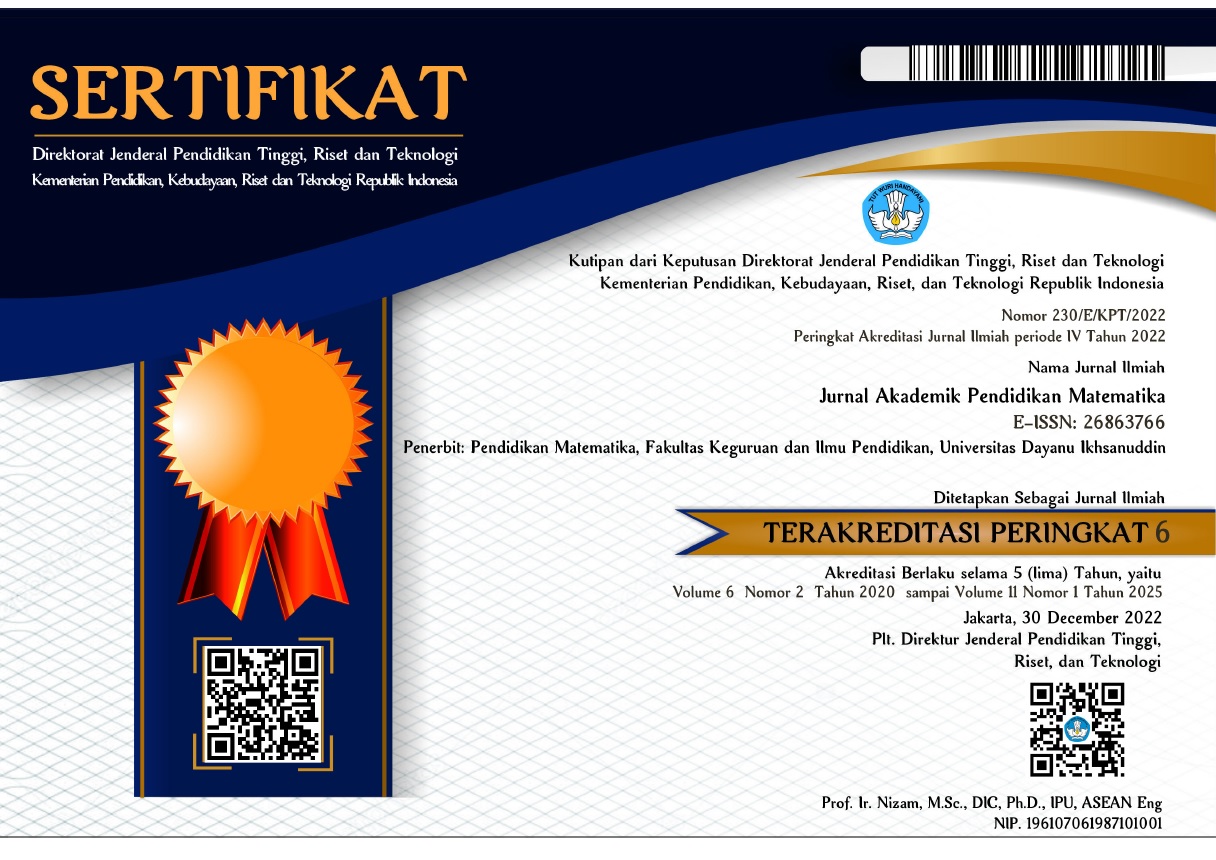The Influence of Problem Solving Learning Methods on Students' Mathematics Learning Creativity on Fractions in Class V SD Negeri Karing-Karing
DOI:
https://doi.org/10.55340/japm.v7i2.441Keywords:
Problem Solving, Creativity of Students Mathematics LearningAbstract
The formulation of the problem in this study is whether the Problem Solving learning method has an effect on students' creativity in learning mathematics on fractions material in class V SD Negeri Karing-Karing?. The population in this study is all fifth grade students of SD Negeri Karing-Karing in the academic year 2021/2022, totaling 36 students consisting of 2 classes which are also used as samples using saturated sampling technique. The data collection of this study used a description test, and analyzed using the Independent-Samples T Test analysis. The results of this study showed that based on the results of descriptive analysis, the average value of increasing creativity in learning mathematics for experimental class students was 82.37; the average increase in students' mathematics learning creativity in the control class was 72.37. And based on the results of inferential analysis by using the t-test, it is known to be significant at 0.014 0.05, which means that H0 is accepted. So it can be concluded that there is an effect of the Problem Solving learning method on the creativity of students' mathematics learning in the fraction material in class V SD Negeri Karing-Karing
Downloads
References
Azhari, & Somakim. (2013). Peningkatan Kemampuan Berpikir Kreatif Matematik Siswa Melalui Pendekatan Konstruktivisme Di Kelas VII Sekolah Menengah Pertama (SMP) Negeri 2 Banyuasin III. Jurnal Pendidikan Matematika, 7(2), 1–12.
Djaali, Muljono, P., & Ramly. (2000). Pengukuran Dalam Pendidikan. Program Pascasarjana.
Djamarah, S. B. (2005). Guru Dan Anak Didik Dalam Interaksi Edukatif. Rineka Cipta.
Djamarah, S. B., & Zain, A. (2010). Strategi Belajar Mengajar. Rineka Cipta.
Handayani, R. D., & Yanti, Y. (2017). Pengaruh Model Pembelajaran Kooperatif Tipe Think Pair Share terhadap Belajar PKN Siswa di Kelas IV MI Terpadu Muhammadiyah Sukarame Bandar Lampung. Jurnal Pendidikan Dan Pembelajaran Dasar, 4(2), 107–123.
Hartono, H. (2008). Statistik Untuk Penelitian. Pustaka Pelajar.
Mappiare, A. T. (2013). Kamus Istilah Konselling dan Terapi. Raja Grafindo Persada.
Murniati, & Endah Resnandari Puji Astuti. (2018). Pengaruh Model Pembelajaran Creative Problem Solving ( CPS ) Terhadap Kreativitas Belajar Siswa. Jurnal Teknologi Pendidikan, 3(1), 75–82.
Pramestika, R. A., Suwignyo, H., & Utaya, S. (2020). Model Pembelajaran Creative Problem Solving pada Kemampuan Berpikir Kreatif dan Hasil Belajar Tematik Siswa Sekolah Dasar. Jurnal Pendidikan: Teori, Penelitian, Dan Pengembangan, 5(3), 136–366.
Purwoko, R. Y. (2019). Eksperimentasi Pembelajaran Matematika Realistik Dengan Metode Penemuan Ditinjau Dari Kreativitas Belajar Matematika Siswa. Universitas Sebelas Maret.
Sugiyono. (2011). Metode Penelitian Kuntitatif, Kualitatif, Dan R&D. Alfabeta.
Sugiyono. (2013). Metode Penelitian Kuntitatif Kualitatif Dan R&D. Alfabeta.
Usman, H., & Setiadi, P. (2011). Pengantar Statistika. Bumi Aksara.
Yamin, M. (2008). Desain Pembelajaran Berbasis Tingkat Satuan Pendidikan. Gaung Persada Press Jakarta.



























